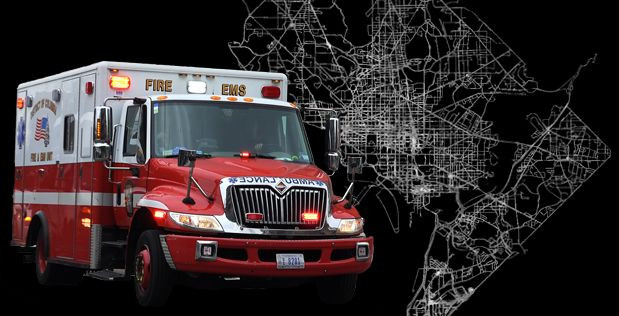US Preparing For 'Dirty Bomb' Attack? DARPA Using Ambulances With Nuclear Radiation Detectors In Washington DC

The Defense Advanced Research Projects Agency announced Wednesday the completion of a seven-month test program that saw it use ambulances fitted with special equipment to keep the nation's capital safe from possible nuclear attacks. DARPA, an agency affiliated with the Department of Defense, is responsible for the development of emerging technologies for use by the military.
This month, DARPA concluded its biggest and longest-running test deployment of its Sigma program. The Sigma program’s goal is to prevent attacks involving radiological "dirty bombs" and other nuclear threats.
For the test, DARPA used advanced software and hardware technology that detects tiny traces of radioactivity and can also isolate unusual spikes that can indicate deadly threats. About 73 such detectors were installed on a fleet of D.C. Fire and Emergency Medical Services ambulances to provide “the first city-scale, dynamic, real-time map of background radiation levels throughout the Capital,” the agency said in a statement. In all, through the course of the test, DARPA collected real-time data for more than 100,000 hours and covered more than 150,000 miles.
“D.C. Fire and EMS was an invaluable partner and testbed for SIGMA’s vehicle-scale detectors ... the data gathered during the D.C. deployment are helping to further fine-tune the SIGMA system for potential deployment in major cities across the country and for emergency use by active-duty military units and National Guard civil support teams,” Vincent Tang, DARPA program manager, said in the statement.
Apart from the vehicle-mounted devices, DARPA has also developed smartphone-sized devices that can be attached to roads, bridges and critical infrastructure and can even fit on a police officer’s belt. These were unveiled in another Sigma test last year in the form of a “whodunit” scavenger radiological hunt that saw a thousand volunteers participate to foil a fictional dirty bomb plot.
Fears of a dirty bomb attack in the United States, however unlikely, is predicated on evidence-based investigations that suggest it may be a possibility. For instance, an investigation reported in the Centre for Public Integrity detailed how an undercover congressional operation exposed how easy it was to sidestep existing regulations to procure all the ingredients and raw materials required to produce a dirty bomb.
© Copyright IBTimes 2025. All rights reserved.






















